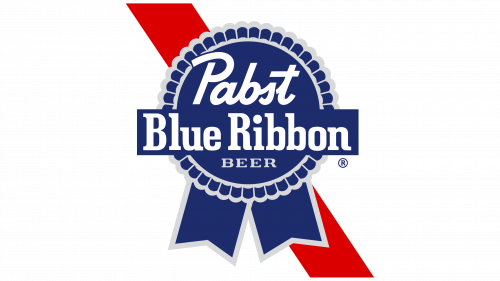 PBR (Pabst Blue Ribbon) Logo PNG
PBR (Pabst Blue Ribbon) Logo PNG
The PBR logo is a testament to the exclusivity of the brewing company. It speaks of its deep historical roots and adherence to traditions. Although the emblem isn’t heraldic, it’s perceived as the personal mark of some dynasty. Indeed, in its early stages, the company was a family affair that rose to international prominence, thus requiring a representative visual identity to showcase its high achievements.
PBR: Brand overview
| Founded: | 1844 |
| Founder: | Pabst Brewing Company |
| Headquarters: | San Antonio, United States |
| Website: | pabstblueribbon.com |
Meaning and History
This American lager is commonly abbreviated as PBR. The name originates from the numerous awards the beer won at fairs and exhibitions between 1882 and 1916. During that time, the product won so many awards that the producer began to wrap each bottle with silk ribbons, as their high status demanded. However, this proved costly, prompting the owner to devise a cost-effective marketing move: he began to print ribbons on the label and mold stickers onto the bottles. Thus, the expression of pride in their beer turned into a commercial savvy.
It all began in Milwaukee, Wisconsin, after Frederick Pabst, who came to the USA with his parents in 1848, married the daughter of brewery owner Philip Best. The young man took control and initiated several significant marketing moves. The tragic event further aided the popularization of the beer – the Great Chicago Fire, which destroyed numerous factories in Chicago. This later brought fame to Milwaukee as the country’s primary brewing center.
What is PBR?
PBR stands for the American brand Pabst Blue Ribbon, under which beer and a range of light alcoholic beverages are produced. Before winning the Blue Ribbon at the fair, it was called Pabst Beer, but it was later renamed to its current title. The lager is brewed in a factory established in Milwaukee, Wisconsin, in 1844. Later, the main brewery office was moved to San Antonio. The founder of this line is Johann Gottlieb Friedrich “Frederick” Pabst.
1844 – today
The PBR logo showcases the glory of the renowned American lager, primarily featuring the victory ribbons that once adorned the bottles. To save costs, the brewery owner began printing them on labels, so they became key attributes. A stylized blue bow with a silvery-blue border is in the middle of the vertically oriented rectangular emblem. It resembles a medal, consisting of a circle, ruffles around the edge, and two freely hanging tails. In the center, in white letters, is the phrase “Pabst Blue Ribbon,” split into two lines. The first word is italicized and sans-serif, while the others are straight and have serifs. They are executed in different font styles. Below, the product type – “Beer” is indicated. Unlike the first two lines, which are white, the third is in a silvery-blue color.
In the top right corner of the logo, the brewery’s location and opening year are stated: “Established in Milwaukee 1844.” This inscription is in a delicate cursive font. It’s elegant and italicized. In contrast, the establishment year is in a plain and straight font. Below the central element is a half-wreath of hops (one full leaf with two cones) and a pair of grain spikes. The background is white, with a red stripe running from the top left corner to the bottom right. It’s broad, long, and diagonal. The emblem’s border is colored in the same red.
Font and Colors
The inscriptions are crafted using custom typefaces of various types. One of them is a modification from Linotype, named Pabst Old Style Condensed. The foundry Schriftguss AG introduced two styles (Ohio-Schrift and Ohio-Kursiv) and later added a third one – Ohio-Kraft. The renowned font artist Frederic W. Goudy also contributed, designing letterforms for the Pabst Brewing Company lager label.
The brand palette includes two primary colors and two secondary ones. The main group comprises a rich red and a deep shade of blue. At the same time, the secondary group features a silvery color with a blue undertone used for outlining and a white background color (also the color of the primary inscription).






